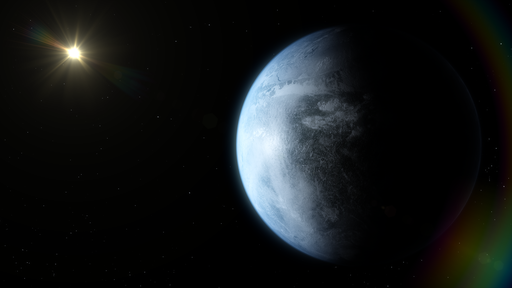Exoplanets in the 2020s
S8 Symposium
European Astronomical Society annual meeting
29-30 June 2022
Multipurpose A
Valencia Conference Centre, Spain
Aims and scope.
Recent surveys of exoplanets have revealed an amazing, and yet unexplained, diversity of planets orbiting other stars. The key to understanding and exploiting this diversity is to study the architectures, dynamics, atmospheres, environments and evolution of these planetary systems. These exoplanets are unique laboratories that hold the potential to transform our understanding of planet formation, physics, and habitability. With the recent advances in the field of exoplanets, including the theory, observation, and instrumentation, we have new opportunities to place the Solar System and the Earth's ecosystem in a broader context. This two-day, six-block EAS symposium aims at bringing together the European community interested in the field of exoplanets, with a particular focus on advances made in the field thanks to high resolution spectroscopy observations.
This symposium "Exoplanets in the 2020s"
EAS 2022 S8 is a continuation of "Exoplanets in the 2020s: theory, observations, and instrumentation"
EAS 2021 S14.
Keywords. Exoplanet searches: radial velocity, transit • System architecture, formation models, occurrence, stellar hosts • Exoplanet atmospheres • Exoplanet interiors • Instruments and missions
Program. We will have two morning blocks and one afternoon block on each of the two days, on Wednesday 29 and Thursday 30 June 2022. Each block will be 90 min long, and will consist of a series of short invited talks (25 min, marked with an asterisk), contributed talks (15 min) and open discussion. We will often mix up (on purpose) very different topics in the same block: radial-velocity surveys and planet interiors, planet atmospheres and space missions...
ePosters.
- Accepted ePosters: titles, authors, affiliations, abstracts (to be done)
Science Organising Committee.
- - Jayne Birkby (Uni. Oxford, United Kingdom)
- + José A. Caballero (co-chair) (CAB, Spain)
- + Jean-Michel Désert (co-chair) (Uni. Amsterdam, The Netherlands)
- David Ehrenreich (Uni. Genève, Switzerland)
- + Esther González-Álvarez (CAB, Spain)
- + Jonay I. González-Hernández (IAC, Spain)
- - Artie P. Hatzes (TLS, Germany)
- Ravit Helled (Uni. Zürich, Switzerland)
- Sasha Hinkley (Uni. Exeter, United Kingdom)
- - Marina Lafarga (Uni. Warwick, United Kingdom)
- + Yamila Miguel (co-chair) (Uni. Leiden, The Netherlands)
- - Juan C. Morales (ICE, Spain)
- + Lisa Nortmann (co-chair) (IAG, Göttingen)
- - Vivien Parmentier (Oxford, United Kingdom)
- Heike Rauer (DLR, Germany)
- - Cristina Rodríguez-López (IAA, Spain)
- - Nuno Santos (Uni. Porto, Portugal)
- Ignas Snellen (Uni. Leiden, The Netherlands)
- - Hannah Wakeford (Uni. Bristol, United Kingdom)

